Generic Modeling Method of Quasi-One-Dimensional Flow for Aeropropulsion System Test Facility
Abstract
:1. Introduction
- (1)
- The concepts of CCV, BCV and virtual control volume are proposed, and a generic quasi-one-dimensional flow modeling method is established.
- (2)
- All the component models and system-level model of ASTF are established, and the limitation that the cavity can only be connected with the throttling element is eliminated.
2. Control Volume
- The fluid in control volume is instantaneously mixed evenly and has uniform properties.
- The gravitational potential energy is ignored.
2.1. Central Control Volume
2.2. Boundary Control Volume
2.3. Outlook
3. Component Models
3.1. Pipeline Model
3.2. Control Valve Model
3.3. Multi-Port Junction Model
3.4. Flow Source/Sink Model
3.5. Pressure/Temperature Boundary Model
4. System-Level Model
4.1. Analysis of System-Level Modeling
4.2. ASTF Model
5. Simulation and Analysis
5.1. Difference between Quasi-One-Dimensional Flow Model and Lumped Parameter Model
- The pressure and temperature of air source 1 were respectively 95.291 kPa and 282 K;
- The pressure and temperature of air source 2 were respectively 147.053 kPa and 396 K;
- The flow at air outlet was 223.2 kg/s.
5.2. Model Verification Based on Test Data
6. Conclusions
- (1)
- Compared with the lumped parameter model, the quasi-one-dimensional flow model can simulate spatial effect and time delay of the airflow.
- (2)
- The simulation results of the quasi-one-dimensional flow model are basically consistent with the test data. The relative errors of mass flow and pressure are less than 2.2% and 1.4%, respectively, further verifying the correctness of the proposed modeling method.
- (3)
- With the generic modeling method, the system-level model still has the form of a staggered grid, and the properties of quasi-one-dimensional flow, such as spatial effect and time delay can be easily addressed during the modeling process.
Author Contributions
Funding
Institutional Review Board Statement
Informed Consent Statement
Data Availability Statement
Conflicts of Interest
Nomenclature
| Flow area (m2) | |
| Diameter of pipe (m) | |
| Total energy per unit mass of fluid consists of the kinetic, potential, and internal energies (J/kg) | |
| Friction factor | |
| Convection heat transfer coefficient (W/m2/K) | |
| Minor loss coefficient | |
| Mass flow rate (kg/s) | |
| Pressure (Pa) | |
| Heat flow rate (W) | |
| Reynolds number | |
| Opening area of control valve (m2) | |
| Time (s) | |
| Temperature (K) | |
| Internal energy per unit mass of fluid (J/kg) | |
| Flow velocity (m/s) | |
| Volume (m3) | |
| Momentum (kg · m/s) | |
| Ratio of specific heats | |
| Density (kg/m3) | |
| Pressure ratio | |
| Flow coefficient | |
| Surface roughness of the wall (m) | |
| Work output of the fluid (excluding xflow work) (J) | |
| Shaft work (J) | |
| Work done by viscous force (J) |
Subscripts/Superscripts
| Downstream port | |
| Index to denote motion parameter cross section | |
| Inlet property | |
| Index to denote state parameter cross section | |
| Junction | |
| Number of outlet ports | |
| Number of inlet ports | |
| Number of control volumes | |
| Outlet property | |
| Upstream port |
References
- Wang, X.; Zhu, M.Y.; Zhang, S.; Dan, Z.H.; Pei, X.T. Technology Development of Foreign Altitude Simulation Test Facilities Control System. Gas Turb. Exp. Res. 2017, 30, 49–55. Available online: https://kns.cnki.net/kcms/detail/detail.aspx?FileName=RQWL201706011&DbName=CJFQ2017 (accessed on 15 April 2022). (In Chinese).
- Tian, J.H.; Dan, Z.H.; Zhang, S.; Wang, X. Environment Simulation Control Technology for Altitude Test Facility. Aerosp. Power 2021, 3, 64–68. Available online: https://kns.cnki.net/kcms/detail/detail.aspx?FileName=HKDL202103019&DbName=CJFQ2021 (accessed on 15 April 2022). (In Chinese).
- Schmidt, K.J.; Merten, R.; Menrath, M.; Braig, W. Adaption of the Stuttgart University Altitude Test Facility for BR700 Core Demonstrator Engine Tests. In Proceedings of the ASME International Gas Turbine & Aeroengine Congress & Exhibition: The American Society of Mechanical Engineers, Stockholm, Sweden, 2–5 June 1998. [Google Scholar] [CrossRef] [Green Version]
- Montgomery, P.A.; Burdette, R.; Krupp, B. A Real-Time Turbine Engine Facility Model and Simulation for Test Operations Modernization and Integration. In Proceedings of the ASME Turbo Expo 2000: Power for Land, Sea, and Air, Munich, Germany, 8–11 May 2000. [Google Scholar] [CrossRef]
- Montgomery, P.A.; Burdette, R.; Wilhite, L.; Salita, S. Modernization of a Turbine Engine Test Facility Utilizing a Real-Time Facility Model and Simulation. In Proceedings of the ASME Turbo Expo 2001: Power for Land, Sea, and Air, New Orleans, LA, USA, 4–7 June 2001. [Google Scholar] [CrossRef]
- Sheeley, J.M.; Sells, D.A.; Bates, L.B. Experiences with Coupling Facility Control Systems with Control Volume Facility Models. In Proceedings of the 42nd AIAA Aerospace Sciences Meeting and Exhibit, Reno, NE, USA, 5–8 January 2004. [Google Scholar] [CrossRef]
- Pei, X.T.; Zhang, S.; Dan, Z.H.; Zhu, M.Y.; Qian, Q.M.; Wang, X. Study on Digital Modeling and Simulation of Altitude Test Facility Flight Environment Simulation System. J. Propul. Technol. 2019, 40, 1144–1152. (In Chinese) [Google Scholar] [CrossRef]
- Zhu, M.Y.; Wang, X.; Pei, X.T.; Zhang, S.; Dan, Z.H.; Miao, K.Q.; Liu, J.S.; Jiang, Z. Multi-Volume Fluid-Solid Heat Transfer Modeling for Flight Environment Simulation System. J. Propul. Technol. 2020, 41, 2848–2859. (In Chinese) [Google Scholar] [CrossRef]
- Boylston, B.M. Quasi-One-Dimensional Flow for Use in Real-Time Facility Simulations. Master’s Thesis, University of Tennessee, Knoxville, TN, USA, 2011. Available online: https://trace.tennessee.edu/utk_gradthes/1058 (accessed on 9 February 2022).
- Xu, Y.H. Research on Real-time Simulation Model and Algorithm for Incompressible Fluid Network Based on One-dimension Flow. Master’s Thesis, Harbin Engineering University, Harbin, China, 2009. (In Chinese). [Google Scholar] [CrossRef]
- Sun, K.; Liu, G.W.; Ma, C.T.; Niu, J.J. Calculation Model of Tube System and Value Based on 1D Network Model. J. Eng. Therm. 2017, 38, 1889–1895. Available online: https://kns.cnki.net/kcms/detail/detail.aspx?FileName=GCRB201709014&DbName=CJFQ2017 (accessed on 15 April 2022). (In Chinese).
- Tao, Z.; Hou, S.P.; Han, S.J.; Ding, S.T.; Xu, G.Q.; Wu, H.W. Study on Application of Fluid Network into the Design of Air System in Engine. J. Aerosp. Power 2009, 24, 1–6. (In Chinese) [Google Scholar] [CrossRef]
- Pei, X.T.; Liu, J.S.; Wang, X.; Zhu, M.Y.; Zhang, L.Y.; Dan, Z.H. Quasi-one-dimensional Flow Modeling for Flight Environment Simulation System of Altitude Ground Test Facilities. Processes 2022, 10, 377. (In Chinese) [Google Scholar] [CrossRef]
- Rennie, R.M.; Sutcliffe, P.; Vorobiev, A.; Cain, A.B. Mathematical Modeling of Wind-Speed Transients in Wind Tunnels. In Proceedings of the 51st AIAA Aerospace Sciences Meeting Including the New Horizons Forum and Aerospace Exposition, Grapevine, TX, USA, 7–10 January 2013. [Google Scholar] [CrossRef]
- Liu, K.; Cheng, M.S.; Zhang, Y.L. Dynamic Model of Priming Processes of Cryogenic Propellant Feed Lines. J. Natl. Univ. Def. Technol. 2003, 25, 1–5. (In Chinese) [Google Scholar] [CrossRef]
- Cheng, M.S.; Liu, K.; Zhang, Y.L. Numerical Analysis of Pre-cooling and Priming Transients in Cryogenic Propellant Feed Systems. J. Propul. Technol. 2000, 21, 38–41. (In Chinese) [Google Scholar] [CrossRef]
- Pan, J.S. Fundamentals of Gasdynamics; National Defense Industry Press: Beijing, China, 1989; pp. 40–63. (In Chinese) [Google Scholar]
- Çengel, Y.A.; Boles, M.A. Thermodynamics: An Engineering Approach, 5th ed.; McGraw-Hill: New York, NY, USA, 2006; pp. 219–232. [Google Scholar]
- Chen, Y.; Gao, F.; Zhang, Z.P.; Cai, G.B. Finite Volume Model for Quasi one-dimensional Compressible Transient Pipe Flow (I) Finite Volume Model of Flow Field. J. Aerosp. Power 2008, 23, 311–316. (In Chinese) [Google Scholar] [CrossRef]
- Zhu, M.Y.; Wang, X. An Integral Type µ Synthesis Method for Temperature and Pressure Control of Flight Environment Simulation Volume. In Proceedings of the ASME turbo Expo 2017: Turbomachinery Technical Conference and Exposition, Charlotte, NC, USA, 26–30 June 2017. (In Chinese). [Google Scholar] [CrossRef]
- Sutcliffe, P.; Vorobiev, A.; Rennie, R.M.; Cain, A.B. Control of Wind Tunnel Test Temperature Using a Mathematical Model. In Proceedings of the AIAA Ground Testing Conference, San Diego, CA, USA, 24–27 June 2013. [Google Scholar] [CrossRef]
- Çengel, Y.A. Heat Transfer: A Practical Approach; McGraw-Hill: New York, NY, USA, 2010; pp. 11–25. [Google Scholar]
- De Giorgi, M.G.; Fontanarosa, D. A Novel Quasi-one-dimensional Model for Performance Estimation of a Vaporizing Liquid Microthruster. Aerosp. Sci. Technol. 2019, 84, 1020–1034. [Google Scholar] [CrossRef]
- Liu, K.; Zhang, Y.L. Finite Elements State-space Model for One-dimensional Compressible Fluid Flow. J. Propul. Technol. 1999, 20, 62–66. (In Chinese) [Google Scholar] [CrossRef]
- Wang, X.Y. Fundamentals of Aerodynamics; Northwestern Polytechnical University Press: Xi’an, China, 2006; pp. 94–101. (In Chinese) [Google Scholar]
- Wang, M.D. Research of Tank Pressurization System of Liquid Rocket Engine Test-bed. Master’s Thesis, Shanghai Jiao Tong University, Shanghai, China, 2009. Available online: https://kns.cnki.net/kcms/detail/detail.aspx?FileName=2010200382.nh&DbName=CMFD2011 (accessed on 15 April 2022). (In Chinese).
- Pei, X.T.; Zhu, M.Y.; Zhang, S.; Dan, Z.H.; Wang, X.; Wang, X. An Iterative Method of Empirical Formula for the Calculation of Special Valve Flow Characteristics. Gas Turb. Exp. Res. 2016, 29, 35–39. Available online: https://kns.cnki.net/kcms/detail/detail.aspx?FileName=RQWL201605009&DbName=CJFQ2016 (accessed on 9 February 2022). (In Chinese).
- Wang, Y.L.; Wang, X.; Zhu, M.Y.; Pei, X.T.; Zhang, S.; Dan, Z.H. Comparative Study on Modeling Methods of Special Control Valves in Altitude Simulation Test Facility. J. Propul. Technol. 2019, 40, 1895–1901. (In Chinese) [Google Scholar] [CrossRef]
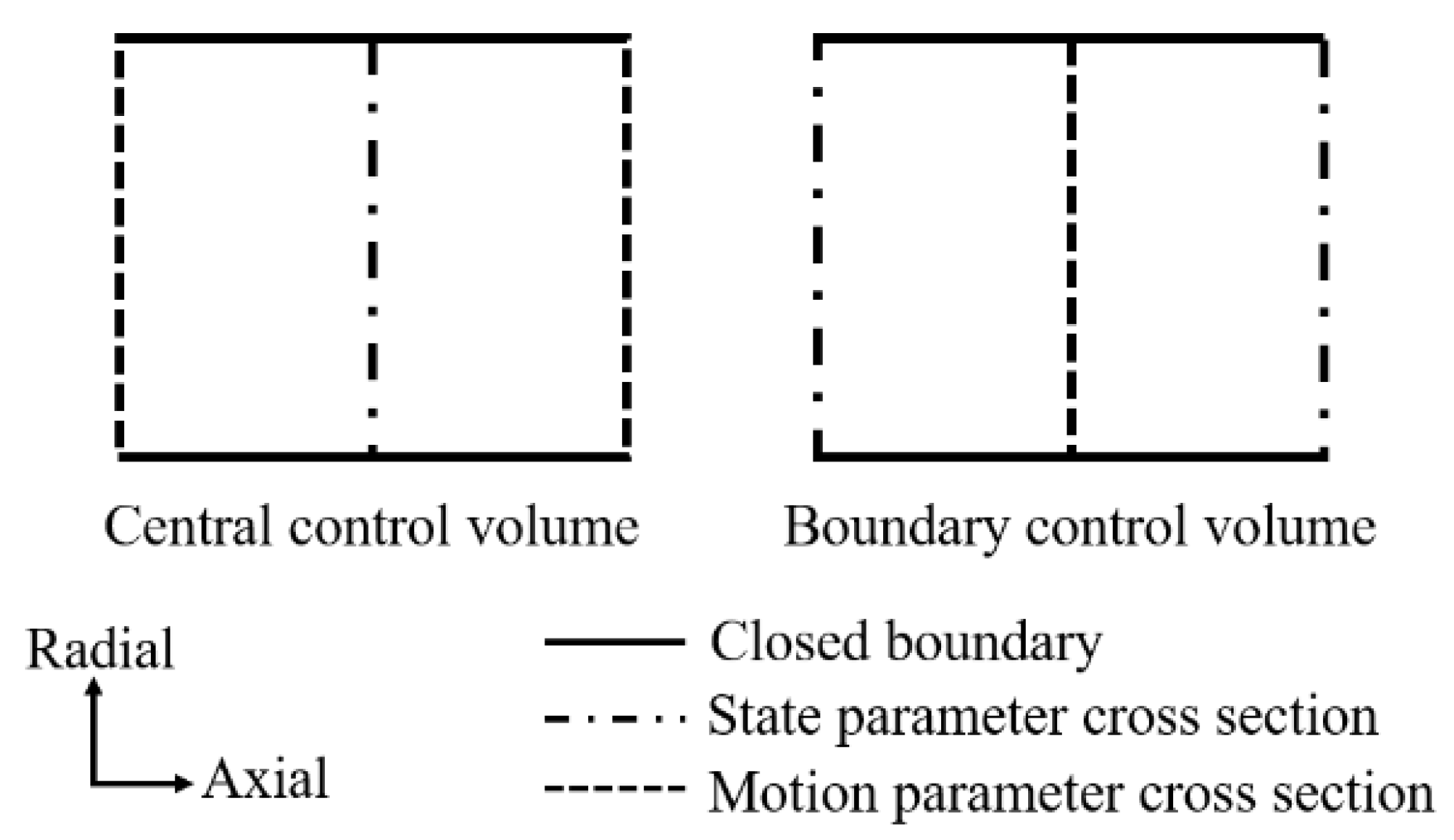
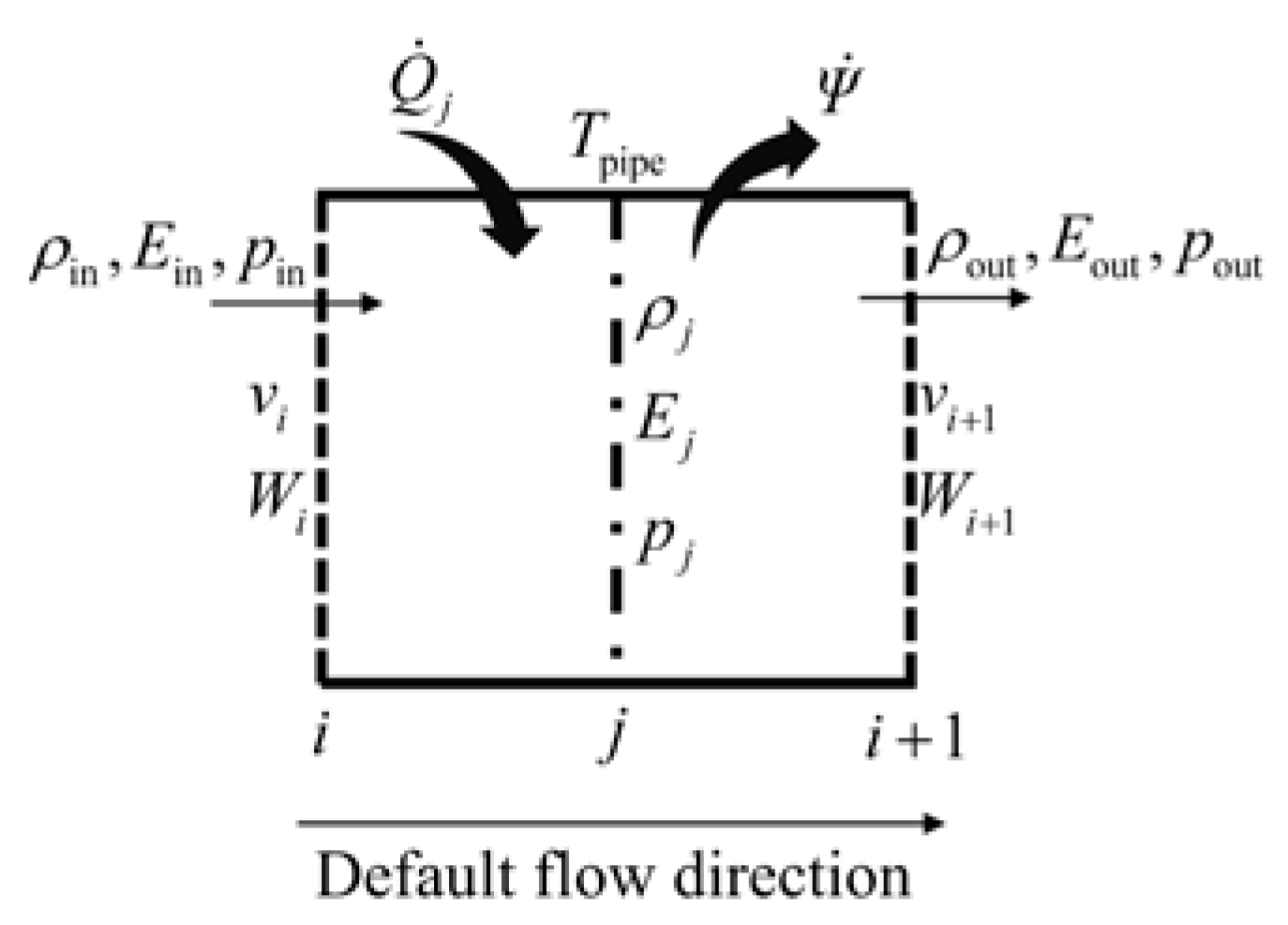
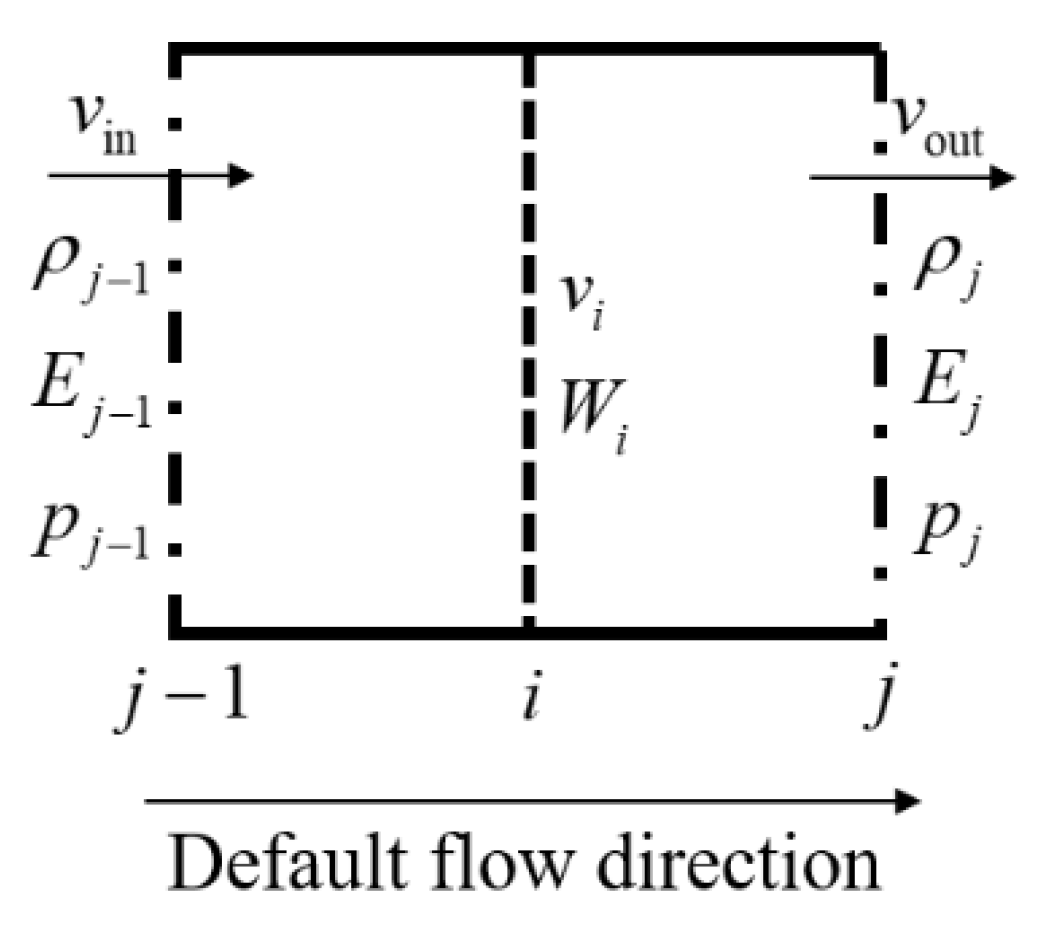

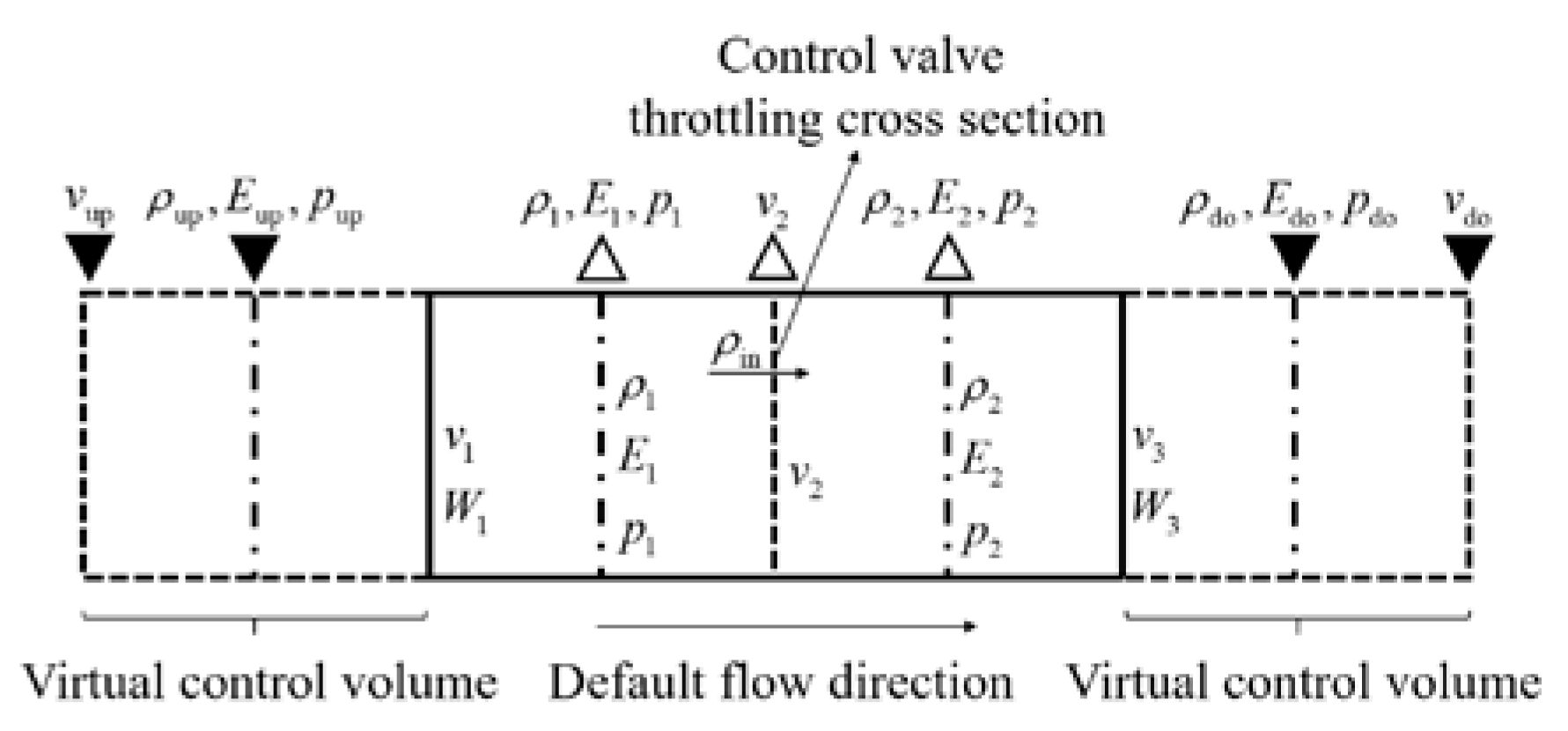


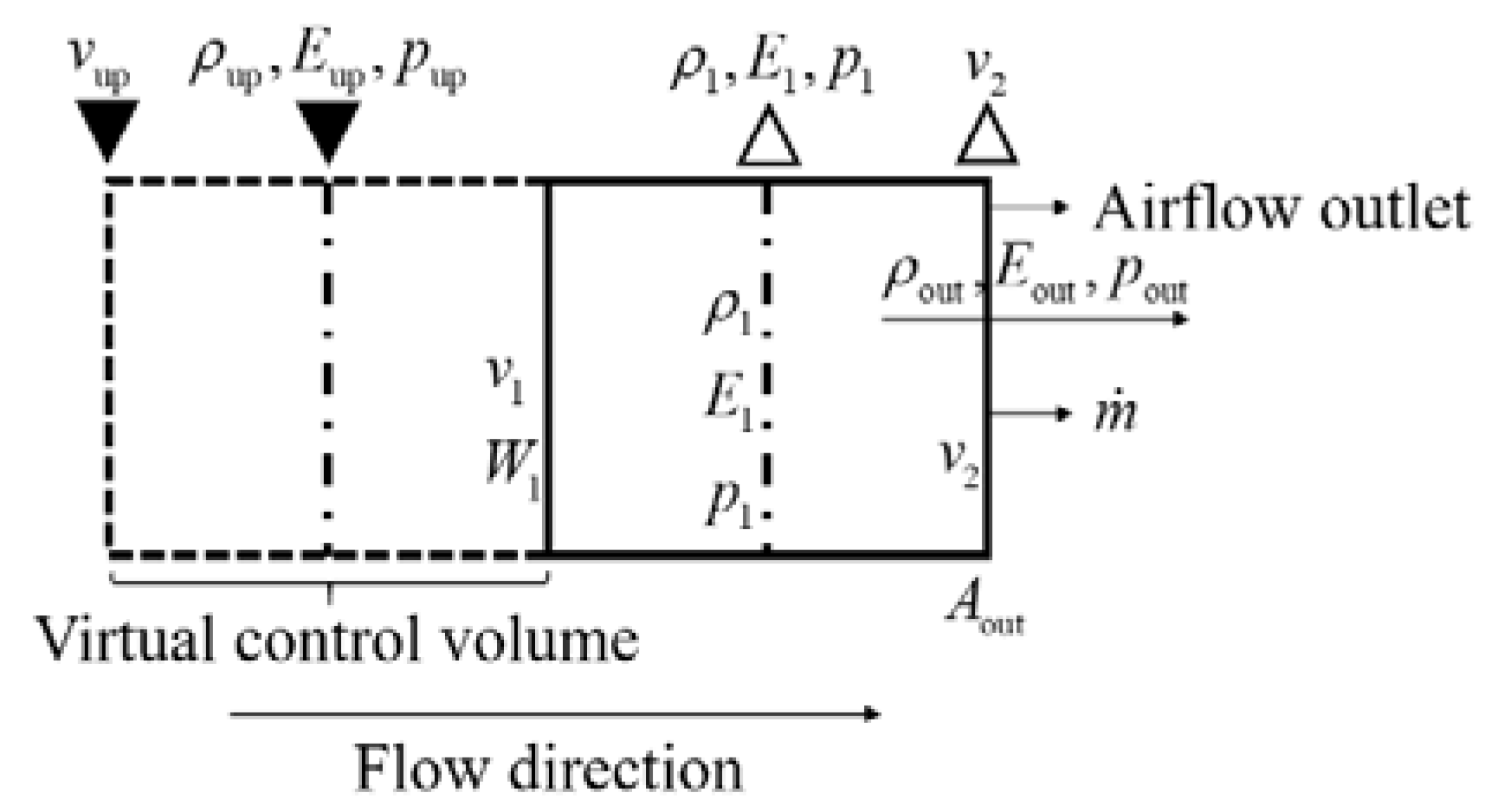
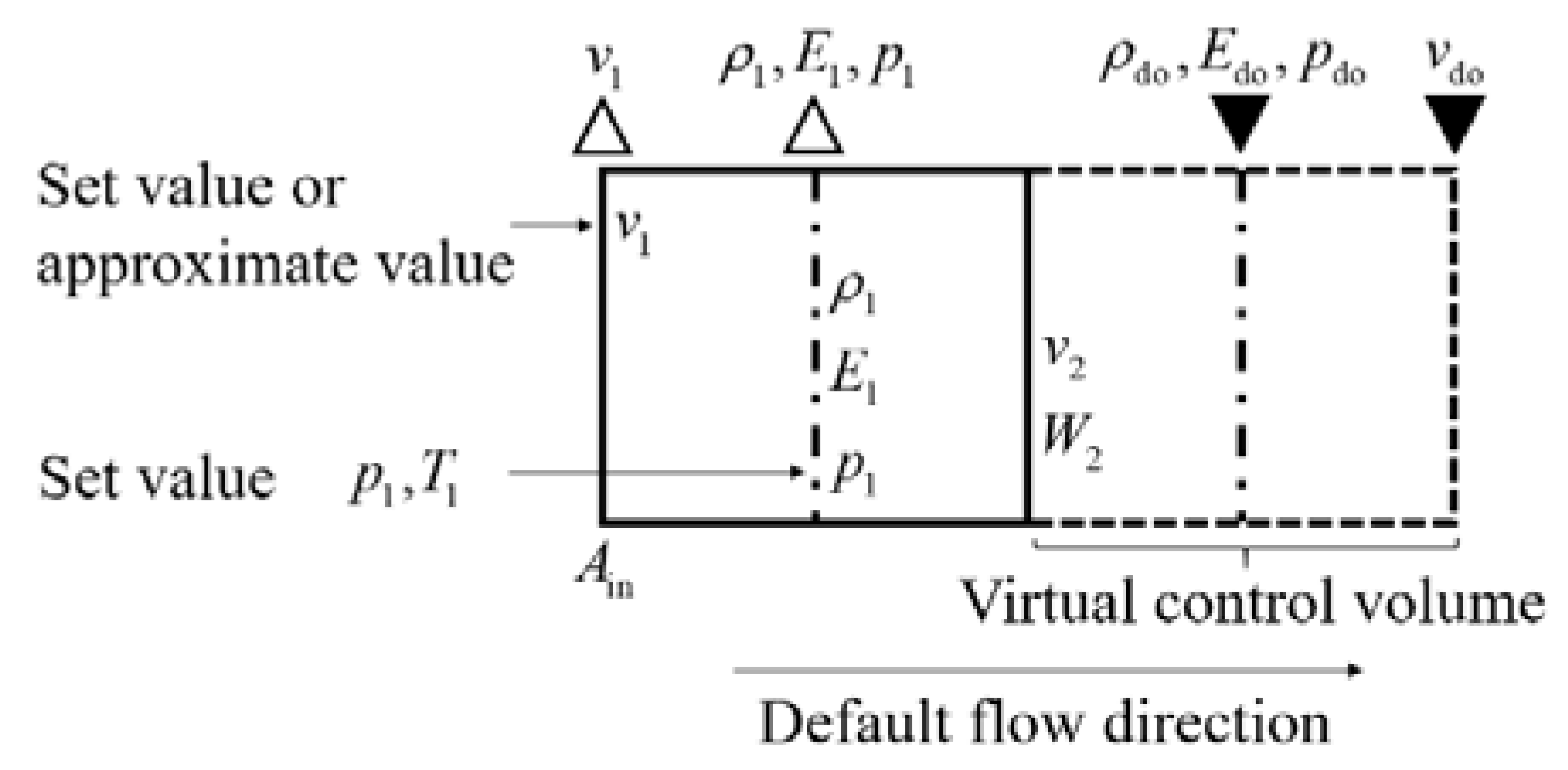
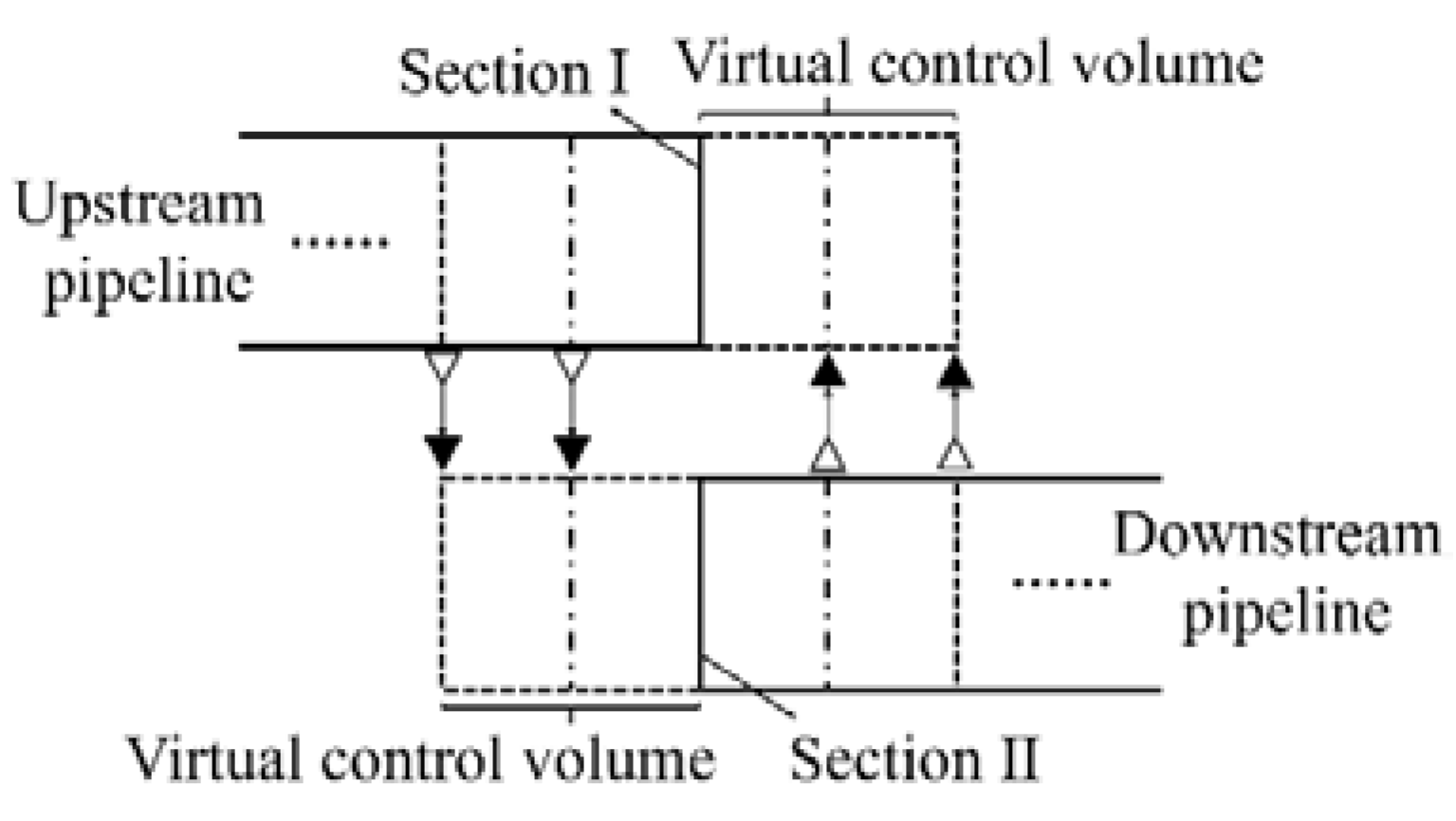



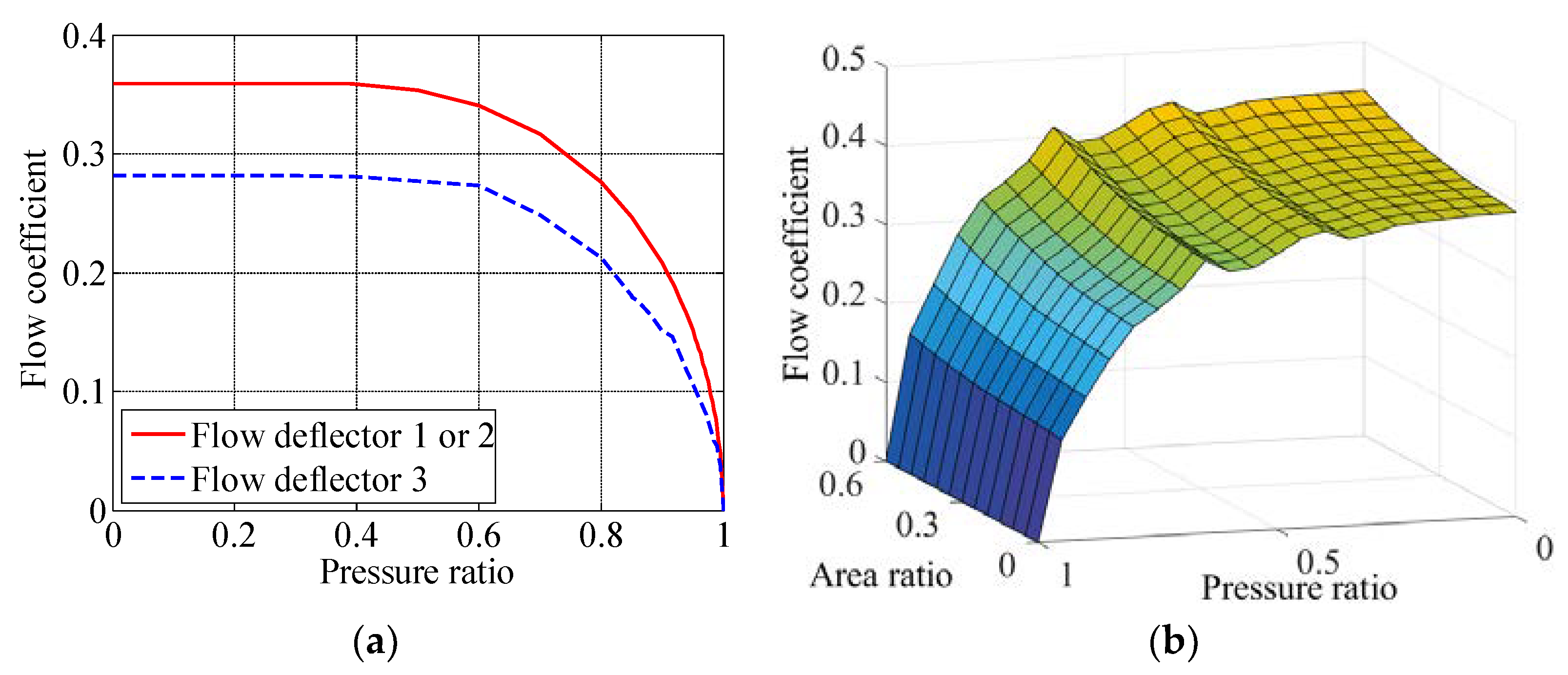

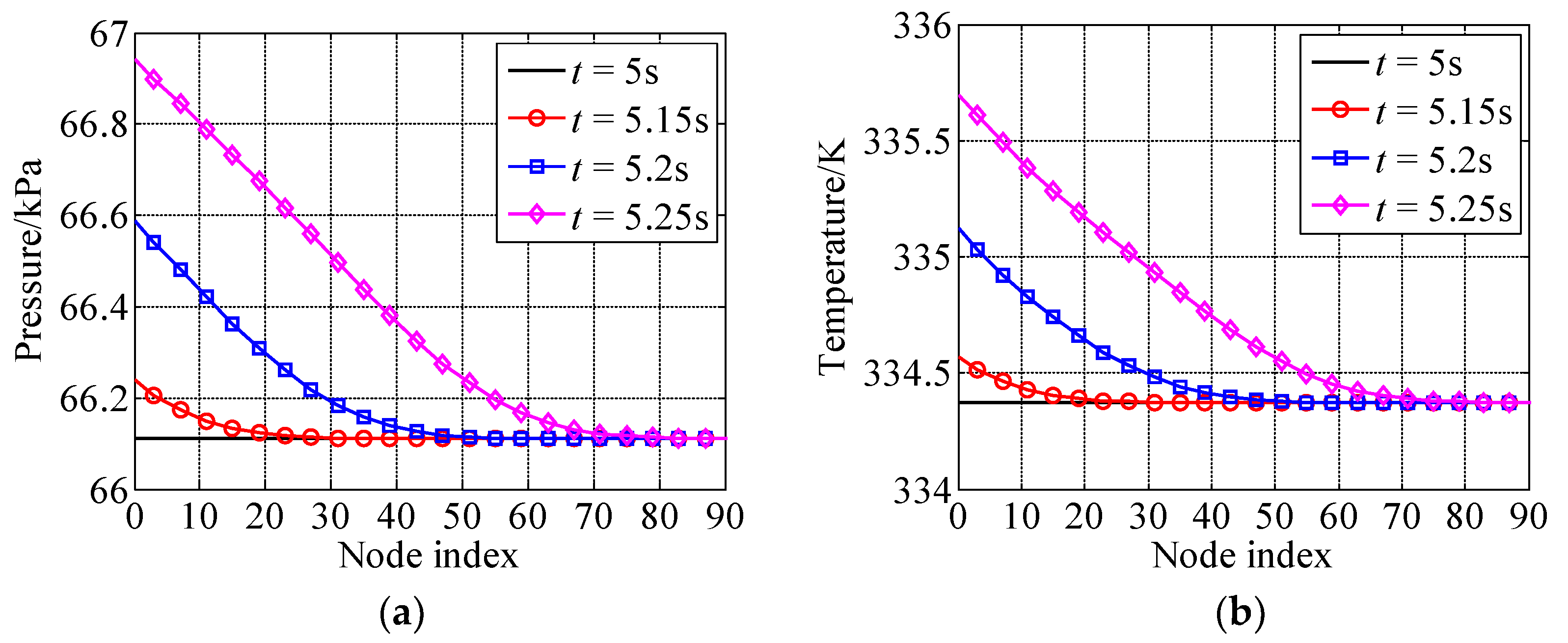
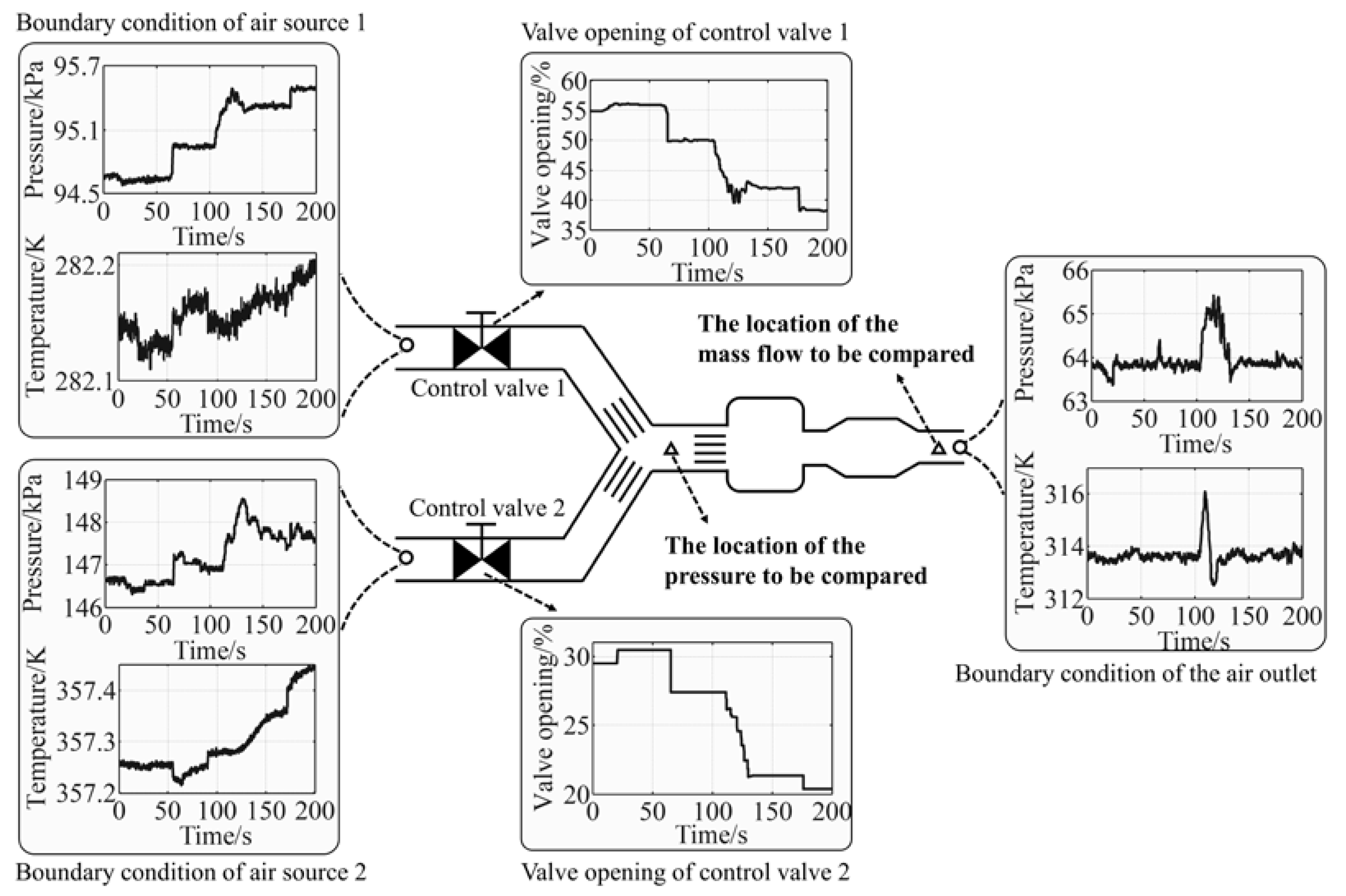


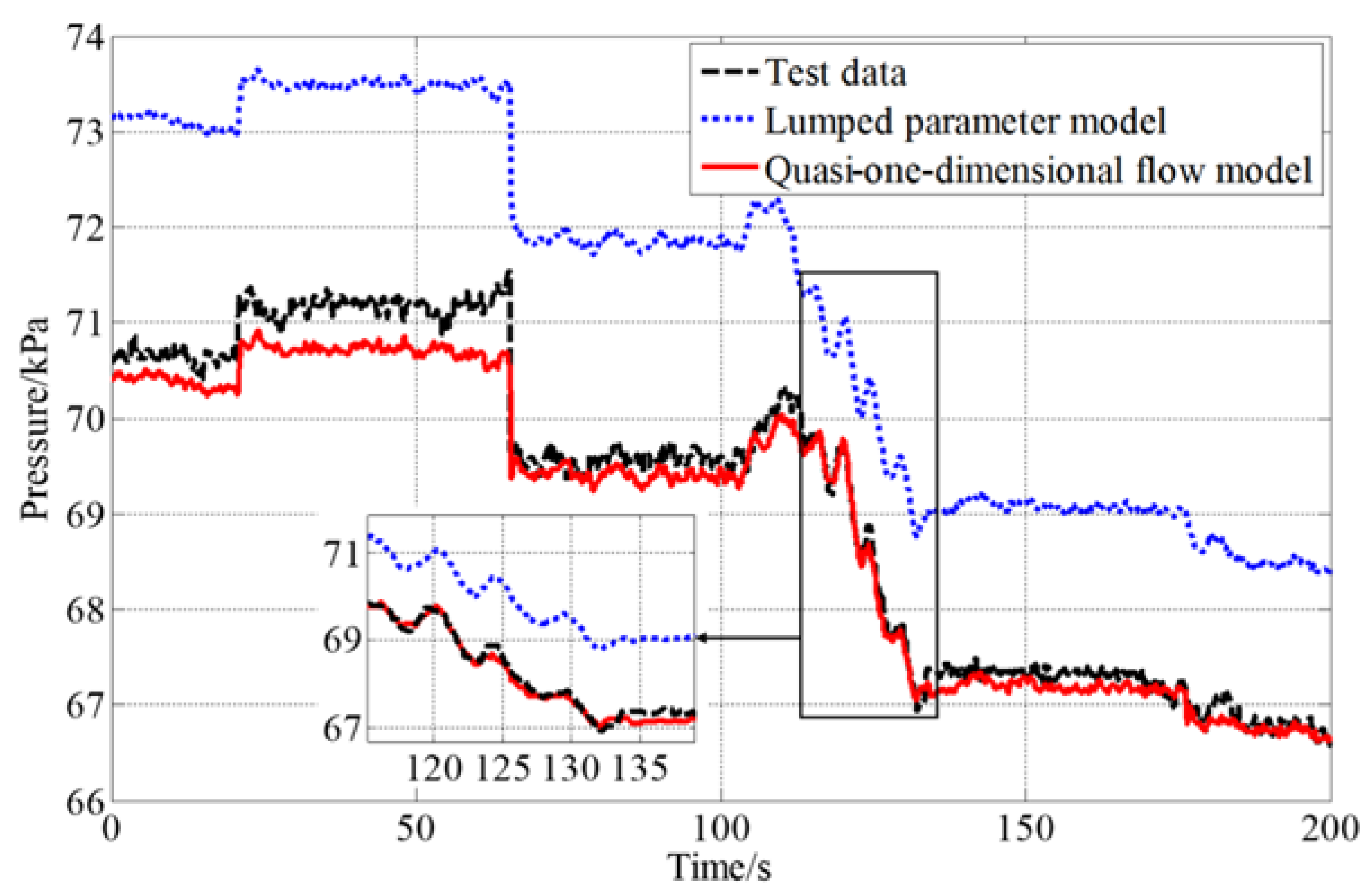

| Modeling Method | Pressure/kPa | ||||||||
|---|---|---|---|---|---|---|---|---|---|
| A | B | C | D | E | F | G | H | I | |
| Lumped parameter | 88.4 | 88.4 | 90 | 90 | 86.4 | 76.6 | 76.6 | 76.6 | 76.6 |
| Quasi-one-dimensional | 88.6 | 87.8 | 91 | 89.6 | 85.9 | 78.6 | 71.6 | 74.4 | 72.4 |
| Modeling Method | Temperature/K | ||||||||
|---|---|---|---|---|---|---|---|---|---|
| A | B | C | D | E | F | G | H | I | |
| Lumped parameter | 282.3 | 282.3 | 395.9 | 395.9 | 341.3 | 336.1 | 336.1 | 336.1 | 336.1 |
| Quasi-one-dimensional | 281.7 | 281.8 | 394.9 | 395.2 | 343 | 343.1 | 341 | 342.4 | 340.6 |
Publisher’s Note: MDPI stays neutral with regard to jurisdictional claims in published maps and institutional affiliations. |
© 2022 by the authors. Licensee MDPI, Basel, Switzerland. This article is an open access article distributed under the terms and conditions of the Creative Commons Attribution (CC BY) license (https://creativecommons.org/licenses/by/4.0/).
Share and Cite
Liu, J.; Wang, X.; Pei, X.; Zhu, M.; Zhang, L.; Yang, S.; Zhang, S. Generic Modeling Method of Quasi-One-Dimensional Flow for Aeropropulsion System Test Facility. Symmetry 2022, 14, 1161. https://doi.org/10.3390/sym14061161
Liu J, Wang X, Pei X, Zhu M, Zhang L, Yang S, Zhang S. Generic Modeling Method of Quasi-One-Dimensional Flow for Aeropropulsion System Test Facility. Symmetry. 2022; 14(6):1161. https://doi.org/10.3390/sym14061161
Chicago/Turabian StyleLiu, Jiashuai, Xi Wang, Xitong Pei, Meiyin Zhu, Louyue Zhang, Shubo Yang, and Song Zhang. 2022. "Generic Modeling Method of Quasi-One-Dimensional Flow for Aeropropulsion System Test Facility" Symmetry 14, no. 6: 1161. https://doi.org/10.3390/sym14061161
APA StyleLiu, J., Wang, X., Pei, X., Zhu, M., Zhang, L., Yang, S., & Zhang, S. (2022). Generic Modeling Method of Quasi-One-Dimensional Flow for Aeropropulsion System Test Facility. Symmetry, 14(6), 1161. https://doi.org/10.3390/sym14061161







